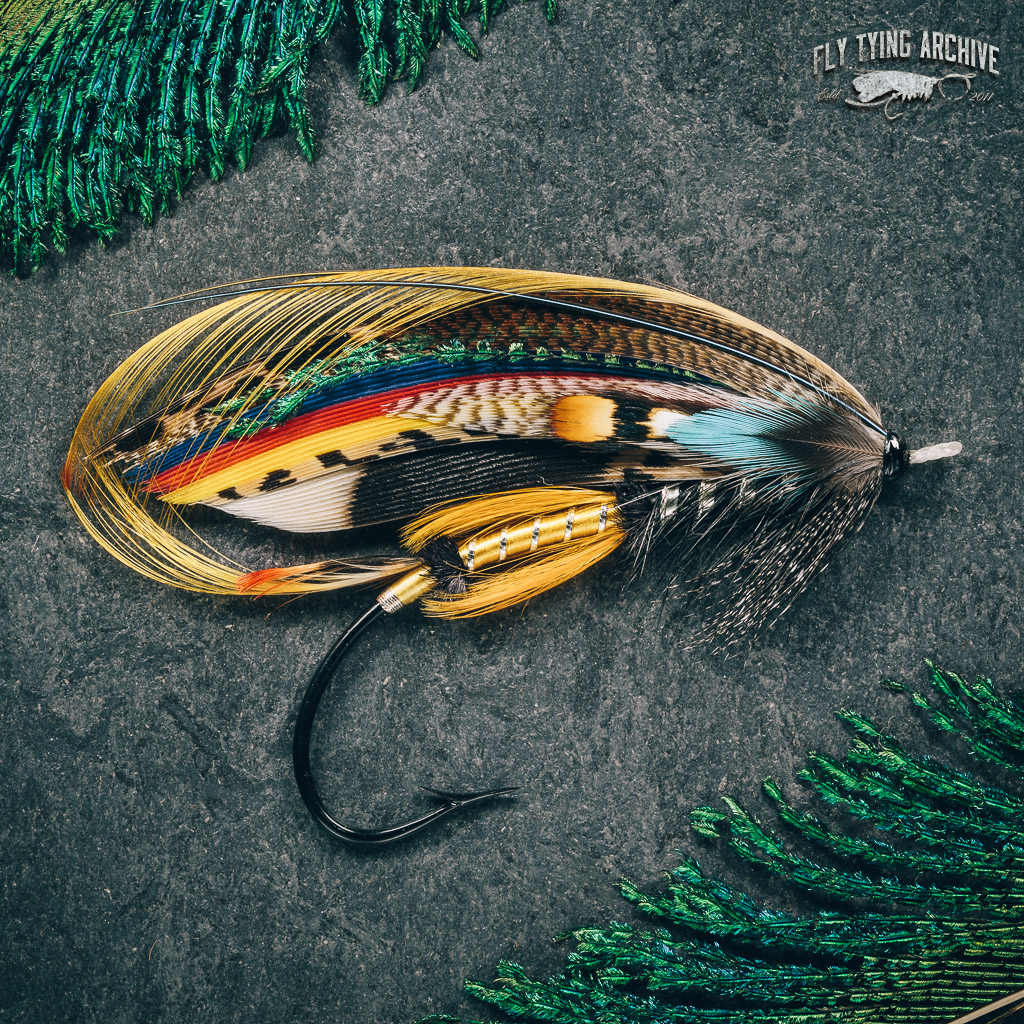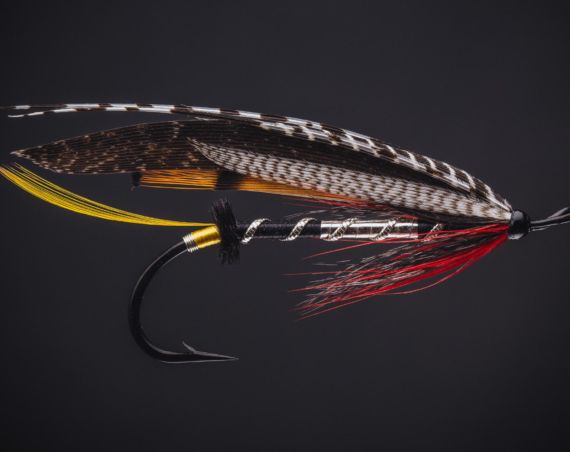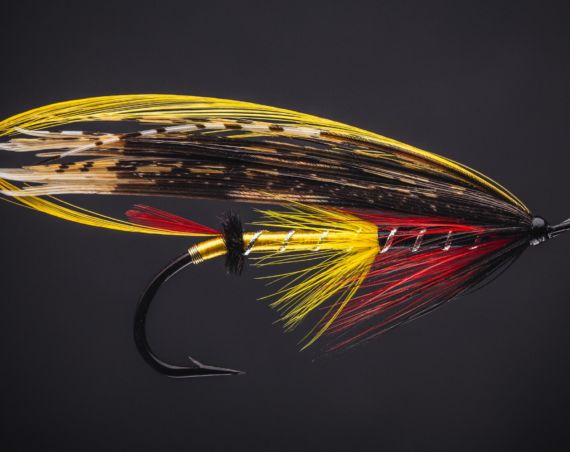Jock Scott
Needs no introduction and we’ve even featured this pattern here before but a different Pryce-Tannatt version of it. Because the notes included with the pattern in Kelson’s book The Salmon Fly are so long on this one I will not bother you with my ramblings too much, just like to add that I modified the pattern a bit when tying as usual, like adding Argus in the wing, but here’s the original from the book.
Jock Scott
TAG.- Silver twist and yellow silk.
TAIL.- A topping and Indian Crow.
BUTT.- Black herl.
BODY.- In two equal sections : No. 1, of yellow silk (butter-cup colour) ribbed with narrow silver tinsel, and butted with Toucan above and below, and black herl : No. 2, black silk, ribbed with broad silver tinsel.
HACKLE.- A natural black hackle, from centre.
THROAT.- Gallina.
WINGS.- Two strips of black Turkey with white tips, Golden Pheasant tail, Bustard, grey Mallard, Peacock (sword feather) Swan dyed blue and yellow, red Macaw, Mallard, and a topping.
SIDES.- Jungle.
CHEEKS.- Chatterer.
HORNS.- Blue Macaw.
HEAD.- Black herl.
“Jock” – for the inventor of this renowned fly was hardly known as John Scott – was born at Branxholme early in February 1817. When thirteen years of age he began his Salmon-angling career under the directions of Robert Kerss, head keeper to the (then) Marquis of Lothian. In two or three years, on leaving his situation, he entered the service of that Prince of sportsmen, the late Lord John Scott, with whom he remained, as Fisherman, for full five-and-twenty years of his life. Afterwards “Jock” spent a year or two at the fly-table, and lived honourably by the constant practice of that art which he was born to enrich. He then became keeper to the present Earl of Haddington M.F.H. in whose service the poor old fellow died, 24th January, 1893. “Jock” was no giant, but had a big heart and a constitution of iron. Second to none at other sports and pastimes in the North, his soul was chiefly in fishing and most of his time was spent in the water without waders.
Admired by many, respected by all, trustworthy to a degree, good at fishing, excellent at fly-making, he distinguished himself for his inventive genius in connection with this particular pattern. Not long before his death (he had been my attendant when young) he gave me a specimen of his own make, and said that he set about the original in 1850.
“When you are too old, Sir,” he added, “ send to Kelso for them Neither Forrest nor Redpath* ever have that nasty dark coloured silk in front (meaning in the order of construction) and know how to keep yellow silk a good colour when put there by themselves.” *Redpath and Co. are wholesale people well known in the trade for their beautiful flies, etc., etc.
It is hardly necessary to say that the utmost triumph of two essential qualities, namely, harmony and proportion, is admirably illustrated in this one of the most popular fancy patterns ever designed by man.
It is only just possible to find a river or a catch, be it in pools, streams, rapids, or flats, shaded or exposed to the light of day, in which a “ Jock Scott,” when dressed properly, has not made for itself a splendid reputation. Remembering what has been urged in these pages with regard to judging at the riverside which kind of fly is best for the time being, we shall find that no pattern illustrates my theories so perfectly and so satisfactorily as this one.
But it should be borne in mind that orange silk (too often used instead of yellow) even closely coiled on the hook, once saturated, always turns a dirty brown shade, intensified in many cases by the roughly waxed tying-silk underneath. That colour is not only objectionable, but undesirable, the material features of the fly in this instance being altogether robbed of both beauty and effect while doing duty in clear water and bright weather.
The only correct account of the life and exploits of the inventor appeared in the Field 18th February, 1893, over the signature of “Punt Gun,” a gentleman who knew “ Jock ” intimately as a Fisherman on the Tweed. “Every word,” says the writer of it in a recent letter to me, “ was taken from his own life, or the writings of his son and family. I was very fond of him ; and it was a labour of love to me to write all I knew of the poor old fellow.”
The interesting biography concluded with these words: “With ’ Jock’s ’ death has passed away another link with old days, when to be a sportsman was, at any rate, to be a man. . . May he rest in peace.”




